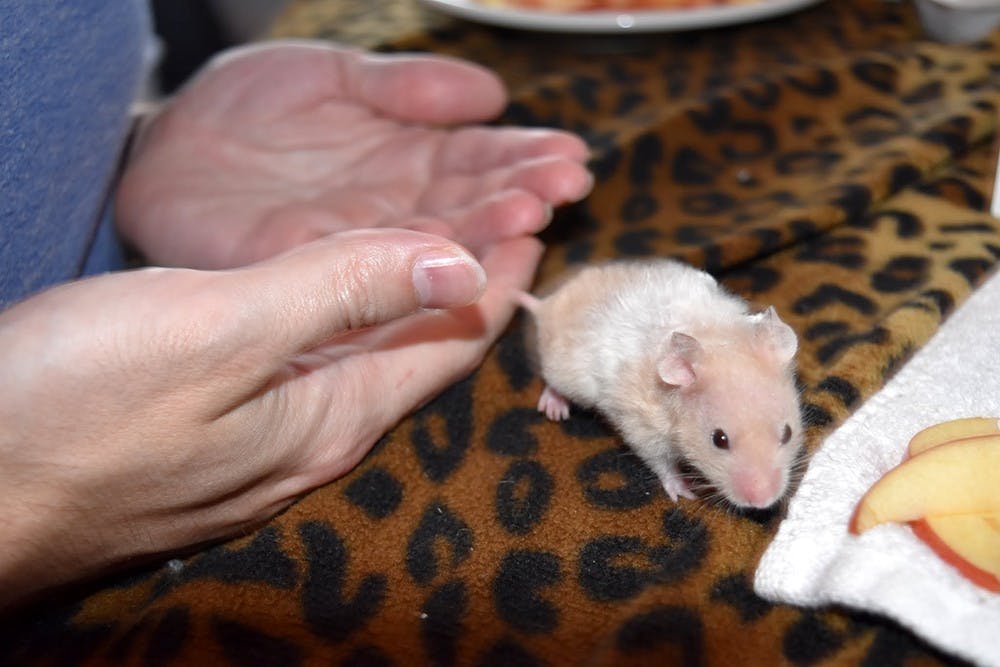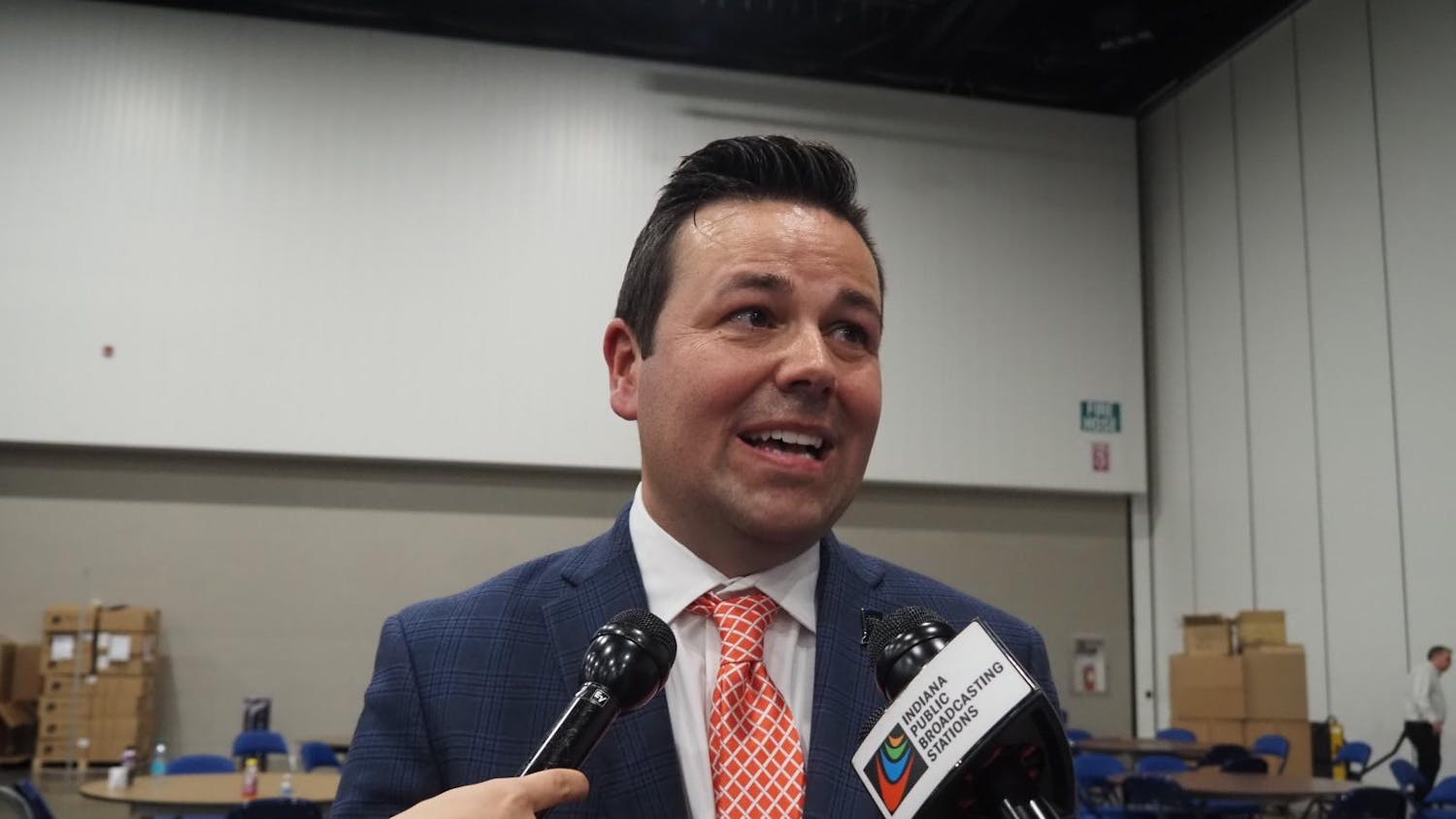Sid the hamster was crying.
He was too young to be separated from his mother, but she was euthanized when they were surrendered to an animal shelter in Flagler County, Florida.
Now, he was in Bloomington, more than 900 miles from home. He cried constantly, sometimes for 30 minutes at a time. And he kept crying no matter how long his rescuer Alex Hernly tried to cuddle him.
Sid and more than 100 other hamsters are part of a group the Pipsqueakery rescue in Bloomington calls the “Florida Fiasco.” A Flagler County man surrendered about 200 hamsters to the local humane society. The shelter almost immediately euthanized 97 hamsters, most of them female.
Hernly and her husband Jason Minstersinly run the Pipsqueakery, a local rescue for hamsters and other rodents like rats, guinea pigs, gerbils, chinchillas, and mice.
“You don’t normally mass euthanize all of the females when you do an intake,” Hernly said. “I can understand euthanizing because they weren’t equipped to handle the intake, but they knew we were willing to take them within an hour and a half of them getting there.”
The man who surrendered the hamsters did so in two waves. He donated about 100 hamsters to the Florida shelter the first day. Immediately, a volunteer reached out to the Pipsqueakery on Facebook asking if they could help. They were expecting him to surrender about 100 hamsters the next day as well.
Hernly and Minstersinly immediately agreed to take all 200 or so hamsters.
Two hours later the volunteer reached out again and told them the shelter had already euthanized all of the females of the first group.
Hernly called the director of the shelter and told her not to euthanize any more females because the Pipsqueakery could take them all. Hernly insisted that wasn’t the humane way to handle it.
Normally, rescues wait until the pregnant female has the babies, and then euthanizes the babies shortly after birth. Hernly said newborn hamsters don’t have fully formed neurological systems yet, so they don’t feel pain.
This saves the mother the stress and work of caring for babies who are most likely not going to live through the rescue process in the first place, Minstersinly said.
When the second group of hamsters was surrendered, Hernly once again discovered they had euthanized all of the females. A normal intake will have about a 10 percent euthanasia rate for sick or injured animals, but this surrender had a rate of about 50 percent, Hernly said.
“At that point I really wanted to pull out of working with them because I kind of felt like they’re being pretty unethical as a shelter,” Hernly said. “And you don’t want to work with unethical shelters when you’re a rescue. However, there were still a hundred or so hamsters that needed a place to go. So I sucked it up and agreed to keep working with them.”
Eventually, two volunteers made the drive with 118 hamsters from Florida to Indiana. With traffic and some hiccups along the way, they arrived in Bloomington on May 27.
Hernly and Minstersinly got to work separating the hamsters, doing a health check and setting them up in their temporary homes. The process took three hours, but setting up the cages with all the supplies took the couple more than 10 hours before the hamsters even arrived.
Hamsters like Sid came in a large bin of about 50 boys each. Male hamsters are supposed to stay with their mothers for a short period of time and then spend time socializing and growing up with other boys.
This is crucial for their development, Minstersinly said.
But they couldn’t do that because the bins were full of hamsters of different ages and litters. The older ones could get aggressive and territorial, so they all had to be separated.
This left Sid alone in his own cage. Too young to be separated from others, he faced the typical problems — not being able to make a nest, constantly crying and being scared of everything.
Hernly and Minstersinly shared videos and photos of Sid crying and working through his problems on their Instagram and Facebook, which have a combined following of almost 100,000 people.
He quickly became the “spokes-hamster” for the group and funneled thousands of dollars to the rescue’s GoFundMe page, which raised money to help care for the hamsters and send them to different shelters in the United States and Canada to be adopted.
About 70 hamsters left Bloomington on June 10 to make their way to new homes.
As for Sid, he’s staying in Bloomington so Hernly and Minsternsinly can monitor his progress and share his journey.
Sid, and the other male hamsters who were separated like him, will take more intensive care to help socialize them.
“They’re going to take awhile to tame and whoever adopts them will need to understand they’re not going to instantly be a cuddly hamster,” Hernly said. “It’s going to take work to get there.”
But Sid is already doing better. He has fans all over the world and one man from Singapore drew him in the likeness of Oliver Twist. The Pipsqueakery is using the drawings on t-shirts to help fundraise for the rest of Sid’s group.
Sid moved to the Pipsqueakery’s basement on June 10 into a 575 square inch condo. He has access to food, toys and, of course, a hamster wheel.






